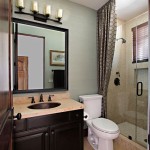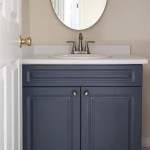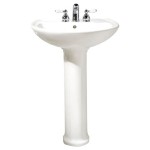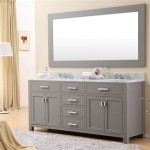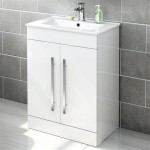Freestanding Bathroom Sinks: Enhancing Bathroom Aesthetics and Functionality
Freestanding bathroom sinks, as nouns, are standalone bathroom fixtures that are not attached to a vanity or countertop. They offer a range of essential aspects that contribute to both the aesthetics and functionality of a bathroom space.
This article explores the key aspects of freestanding bathroom sinks, providing insights into their design, materials, installation, maintenance, and benefits. Understanding these aspects will enable homeowners and designers to make informed decisions when selecting and incorporating freestanding sinks into their bathroom renovations.
Design and Aesthetics
Freestanding sinks come in a diverse range of designs, from classic pedestal sinks to contemporary sculptural pieces. Pedestal sinks have a narrow column-like base, providing a timeless and elegant look. Modern designs often feature geometric shapes, curved lines, and metallic finishes, adding a touch of sophistication and style to the bathroom.
Materials and Durability
Freestanding sinks are typically made from high-quality materials such as porcelain, ceramic, and natural stone. Porcelain sinks are known for their glossy finish, durability, and resistance to stains and scratches. Ceramic sinks offer a similar level of durability but may have a slightly more porous surface. Natural stone sinks, such as marble or granite, exude a luxurious and timeless appeal but require regular sealing to maintain their beauty and prevent staining.
Installation Considerations
Installing a freestanding bathroom sink requires careful planning and consideration. Adequate space is necessary both around and underneath the sink to allow for easy access and maintenance. Additionally, the plumbing must be strategically planned to ensure proper drainage and water supply. Professional installation is recommended to ensure a secure and functional installation.
Maintenance and Care
Regular cleaning and maintenance are essential to preserve the beauty and functionality of a freestanding sink. Daily wiping with a damp cloth is sufficient for most surfaces. For deeper cleaning, non-abrasive cleansers and soft sponges should be used. Avoid using harsh chemicals or abrasive materials, as they can damage the finish of the sink.
Benefits of Freestanding Bathroom Sinks
Freestanding bathroom sinks offer several advantages over traditional vanity-mounted sinks. They create a sense of openness and spaciousness, particularly in smaller bathrooms. The absence of a vanity or countertop allows for easier cleaning and maintenance. Additionally, freestanding sinks can serve as a focal point in the bathroom, adding a touch of elegance and sophistication.
Conclusion
Freestanding bathroom sinks are a versatile and stylish option for both modern and traditional bathroom designs. By considering the essential aspects of design, materials, installation, maintenance, and benefits, homeowners and designers can select the perfect freestanding sink to enhance the aesthetics and functionality of their bathroom space.

Floor Standing Basins Big Bathroom

Floor Standing Basin Designer Freestanding Sink

Cento 3534 9123k1 By Ws Bath Collections Rectangular Freestanding Console Bathroom Sink In Glossy White With Chrome Structure 47 2 Modo

33 Tall White Stone Resin Cylindrical Pedestal Bathroom Sink Hand Wash Basin

Bathroom Sink Mahgoub Cabanes 42x60 Cm White For Ceramic And Porcelain

Hotel Designer Design 304ss Basin Free Standing Pedestal Sink Bathroom Sinks China 304 Stainless Steel Vanity Made In Com

600mm Bathroom Vanity Unit Freestanding 60cm Sink Cabinet Basin Oak Effect Storage Classic Diy At B Q

What S Hot Freestanding Bathroom Sinks Betterdecorating

Washbasins Duravit

59 Teak Wood Freestanding Double Bathroom Vanity With Top Vessel Sink Homary
Related Posts
